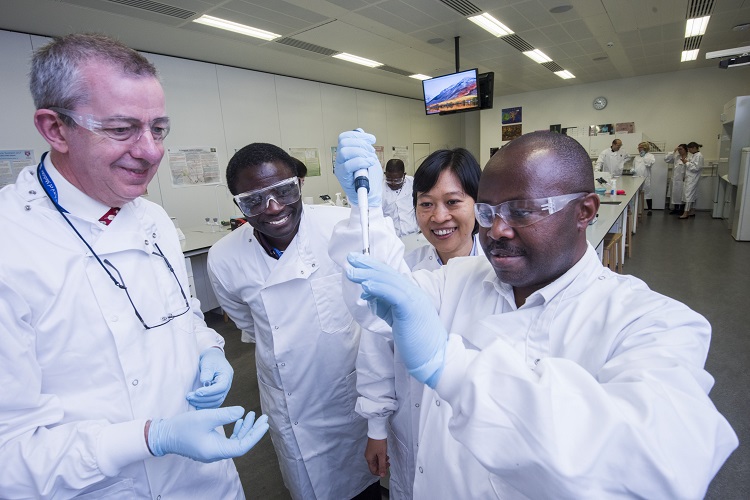MBLA Conference
St Andrews breakthrough: saving lives across the world
 Leading experts from around the world are gathered in St Andrews to learn how to dramatically cut the time needed to diagnose tuberculosis to save hundreds of thousands of lives in emerging countries.
Leading experts from around the world are gathered in St Andrews to learn how to dramatically cut the time needed to diagnose tuberculosis to save hundreds of thousands of lives in emerging countries.
Tuberculosis is an entirely treatable disease that still causes about a million deaths every year. To change this and save lives, new tools, especially better diagnostics, are required.
At present it takes up to two months to grow the tuberculosis germ in the laboratory, but a team at the University of St Andrews have developed a tool that provides the same result in just four hours.
The molecular bacterial load assay (MBLA) can tell health care workers whether the patient has tuberculosis or not and, because it is able to count the number of live organisms, can show whether the patient is responding to antibiotics.
Professor Stephen Gillespie, leader of the infection group at the University of St Andrews, said: “Tuberculosis culture is the main method currently used to diagnose disease and to assess the performance of treatment regimens and is very slow.
“It can be many months after the patient visits the clinic before the results are available. This means that the patient can be on the wrong treatment for a long time with the obvious risks to their health and the very significant risk of their bug developing new resistance.
“MBLA is unique – like a molecular culture method. It means the patient can be seen in the morning and the result be available in the afternoon. If they are failing therapy, this can be identified and managed.”
The St Andrews team have been working with colleagues across the world to test how this promising innovation can change practice.
Health professionals from 16 countries are visiting the School of Medicine to share their field experience working with the MBLA test and discuss how to translate this into health benefits globally.
To facilitate these discussions, colleagues from some of the world’s most influential policymakers in the field, including the World Health Organisation (WHO) and the Foundation for Innovative Diagnostics (FIND), will join the group.
Dr Wilber Sabiiti, who has been leading the field evaluation of the test, recalls the excitement the test brought to laboratory technologists and clinicians in the countries he has visited. He said: “They asked, ‘do you mean we can see the change in patient bacterial burden in a matter of hours?’.
“Given their experience of working with tests which would take weeks or months to get results, this was a game changer. Ability to know in real time how the patient is responding to therapy is of paramount importance in the clinical management of tuberculosis disease.”
A video of Dr Sabiiti talking about MBLA is available via Dropbox.
Issued by the University of St Andrews Communications Office.
Dr Sabiiti is pictured above demonstrating the test to Frank Bonsu from Ghana and Thuong Nguyen from Vietnam while Professor Gillespie (left) looks on.